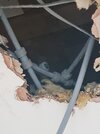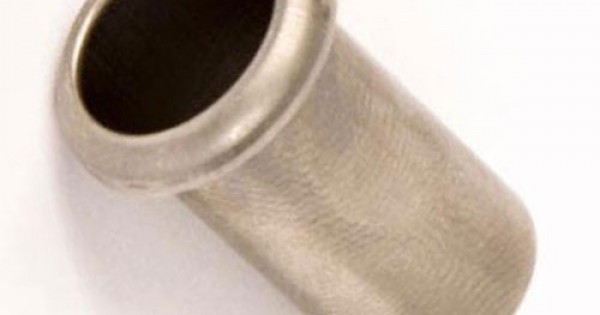I got a phone call from a customer just over a week ago about a leak. Water (mains pressure) had been peeing through the guest room ceiling. I was tasked with finding the leak so that British Gas could fix it.
It was eventually traced to a polyplumb tee. One of the polyplumb pipes had blown itself out of the fitting (cold water).
8 days later I got another call from the same customer- another torrential leak through the same ceiling (warm water though this time).
I had to start punching holes in the still damp ceiling to eventually find the leaking pipe. Yet again it was a polyplumb tee with pipe that had blown out.

Is the customer just really unlucky?
It is a three story house with 45(?)mm MDPE supply and a Megaflow.
He has a total of four 22mm pipes running from the ground floor upwards, 2 are hot, 2 are cold. Only three of them have stopcocks though.
Previously I was able to isolate the leaking pipe using one of the stopcocks and reinstate water to the ground floor. This time however it was the pipe that runs out of the top of the megaflow that was supplying the leak. That pipe has no stop cock. I recommended that the customer ask BG to fit one.
The customer did mention that he had asked BG to increase the pressure to the shower in the top floor ensuite but I am not sure if that has anything to do with 3 year old polyplumb fittings failing.
Thanks in advance.
It was eventually traced to a polyplumb tee. One of the polyplumb pipes had blown itself out of the fitting (cold water).
8 days later I got another call from the same customer- another torrential leak through the same ceiling (warm water though this time).
I had to start punching holes in the still damp ceiling to eventually find the leaking pipe. Yet again it was a polyplumb tee with pipe that had blown out.

Is the customer just really unlucky?
It is a three story house with 45(?)mm MDPE supply and a Megaflow.
He has a total of four 22mm pipes running from the ground floor upwards, 2 are hot, 2 are cold. Only three of them have stopcocks though.
Previously I was able to isolate the leaking pipe using one of the stopcocks and reinstate water to the ground floor. This time however it was the pipe that runs out of the top of the megaflow that was supplying the leak. That pipe has no stop cock. I recommended that the customer ask BG to fit one.
The customer did mention that he had asked BG to increase the pressure to the shower in the top floor ensuite but I am not sure if that has anything to do with 3 year old polyplumb fittings failing.
Thanks in advance.
Last edited:


